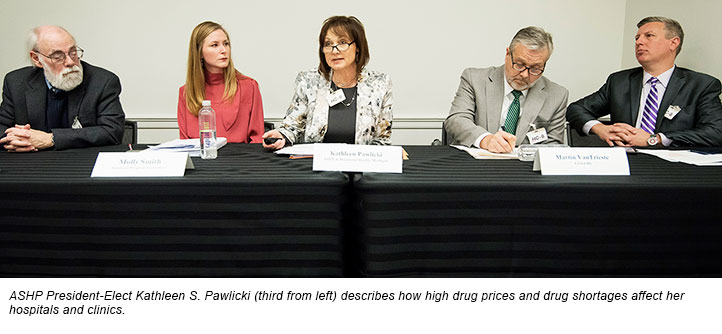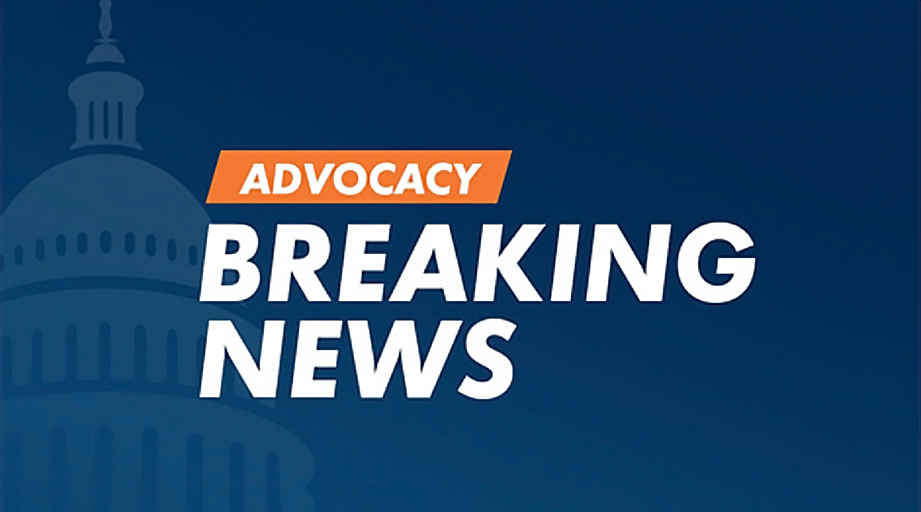
At Beaumont Health in Michigan, managing drug product shortages isn’t a one-person job — the task requires the equivalent of six full-time employees, or 12,000 staff hours each year, said Chief Pharmacist and ASHP President-Elect Kathleen S. Pawlicki.
“We have about 75 [shortages] that we are actively monitoring. There are more out there, but those are the ones that affect us on a daily basis,” she said.
She said there’s often no advance notice of when a shortage will occur, and the health system doesn’t learn about a shortage until it attempts to purchase the product.
Pawlicki was one of the speakers at a February 7 briefing in Washington, D.C., on drug product shortages and drug costs.
The event was sponsored by ASHP and the American Hospital Association (AHA) and featured highlights from the January 15 report “Recent Trends in Hospital Drug Spending and Manufacturer Shortages” from AHA, ASHP, and the Federation of American Hospitals.
According to the report, essentially all hospitals and group purchasing organizations that responded to a survey indicated that managing drug product shortages is at least somewhat challenging. Nearly 80 percent reported that managing shortages is extremely challenging.
The report also found that drug shortages place a financial strain on hospitals. Nearly 80 percent of survey respondents said drug shortages had at least a moderate effect on overall drug spending during fiscal years 2015–17.
Pawlicki said hospitals respond to drug shortages by finding alternative products and revising, sometimes repeatedly, the electronic medical record and other components of the medication use process. But she cautioned that those responses may come with a cost.
“The medication use process has multiple steps within a healthcare setting ... to assure that we deliver safe care to our patients. Frequent disruptions to this process and increased variability within the process create an opportunity or chance for error,” she said.
Pawlicki also explained how rising drug costs are affecting her hospital.
From 2015 to 2018, she said, Beaumont’s spending on drugs rose by $85 million due to increases in the prices of the hospital’s top 10 drugs, purchases of high-cost new drug products, skyrocketing costs for the generic drugs nitroprusside and isoproterenol, and restrictions from manufacturers on products available from wholesalers.
Molly Smith, Vice President of Coverage and State Issues for AHA, said that starting around 2013, AHA’s member hospitals began reporting that patients were coming to the emergency room because they couldn’t afford their medications. Hospitals were also concerned about multiple price hikes for medications throughout the course of each year.
Those and related concerns led to the development of the Jan. 15 report.
“The results were not surprising to us,” Smith said.
According to the report, hospitals’ spending on drugs increased by 18.5 percent, on average, from fiscal year 2015 to fiscal year 2017. Spending on inpatient medications rose by 9.6 percent per admission, on average, and spending on outpatient medications grew by 28.7 percent per encounter.
The lack of generic competition is one factor that contributes to high drug prices, said Jack Hoadley, Research Professor Emeritus at Georgetown University in Washington, D.C.
AHA’s Smith urged attendees to foster generic competition by supporting the Creating and Restoring Equal Access to Equivalent Samples (CREATES) Act, which was recently reintroduced in the Senate.
The act would prevent manufacturers of brand-name drugs from withholding samples of those products from drug makers that want to produce generic versions of the medications.
ASHP also supports the CREATES Act.
Martin VanTrieste, President of Civica Rx, described how his not-for-profit organization is working to establish fair pricing for medications and prevent drug shortages.
The organization represents about 800 U.S. hospitals that are collaborating to produce critical medications under a transparent pricing model sustained by long-term purchasing agreements.
VanTrieste said Civica expects to begin manufacturing 14 drug products this year.
[This news story appears in the May 15, 2019, issue of AJHP.]








